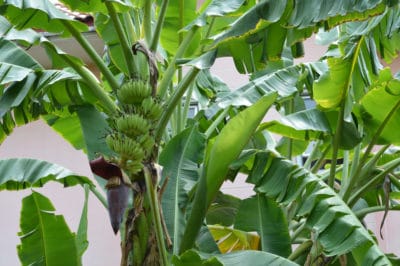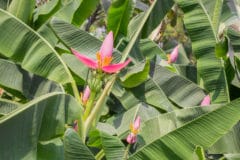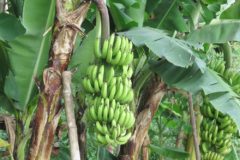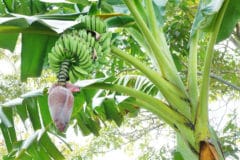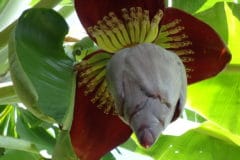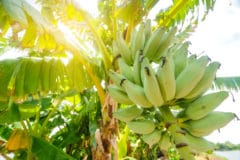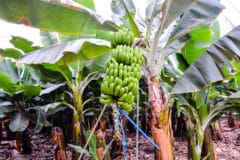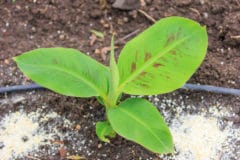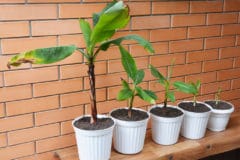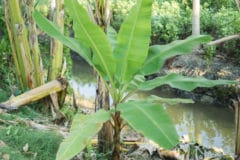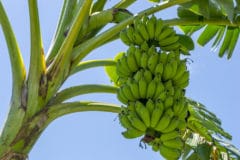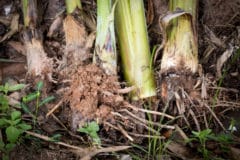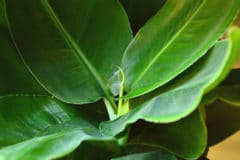In the Zone
Edible bananas fall into one of two groups or are hybrids between the two. Musa acuminata varieties are hardy only in USDA Zones 10 and 11. Musa balbisiana varieties are hardy in USDA Zones 9b through 11. Hardiness varies among hybrids. In those areas, it’s best to grow the plants in full sun for best fruit production.
Texas and Bananas
Texas contains USDA Zones from 6 to 9. The mid to northern areas of the state include San Antonio, Austin, Houston, Waco, Dallas, Lubbock, El Paso and Amarillo. Amarillo is Zone 6, while much of the middle western part of the state is Zone 7. The middle eastern section is Zone 8. Bananas will be most successful in the Zone 9 southern tip: Corpus Christie, Laredo and Galveston.
Banana Varieties for Texas
Edible bananas run the gamut from the typical grocery store variety through bananas that are quite seedy to those that are only edible when cooked (plantains). Bananas for Texas include the following:
- Dwarf Brazilian
- Dwarf Cavendish
- Dwarf Orinoco
- Goldfinger Bananas
- Grand Nain
- Musa ‘Ice Cream’ (Blue Java Banana)
- Musa ‘Orinoco’ (Orinoco Banana Tree)
- Mysore
- Rajapuri.
Temperatures for Bananas
The preferred USDA Zone is only part of the picture when growing bananas in Texas. Although they like warmth, temperatures over 100°F (38°C) hamper fruit development. Banana shoots grow best when temperatures remain in a range of 78 to 82°F (26 to 28°C). Fruits develop best between 84 to 86°F (29 to 30°C). Below 60°F (16°C), bananas can suffer chill damage, and all are sensitive to frost.
Spacing For Banana Trees
The standard edible banana needs plenty of space for proper development and fruiting. Plant them about 12 feet apart. Space dwarf plants six to 10 feet apart, depending on height. Bananas naturally grow in groves, so it’s best to plant at least three. However, they don’t need other plants for pollination, as many fruit trees do.
Harvesting Bananas
The banana usually flowers in late spring – April to June. Plants will be ready to harvest in about three months, although some varieties take longer. Bananas should be light green, with a few yellow bananas. Don’t wait until the bananas are all yellow. Cut the entire bunch from the tree and ripen in a cool room until peels are yellow and spotted dark brown or black.
